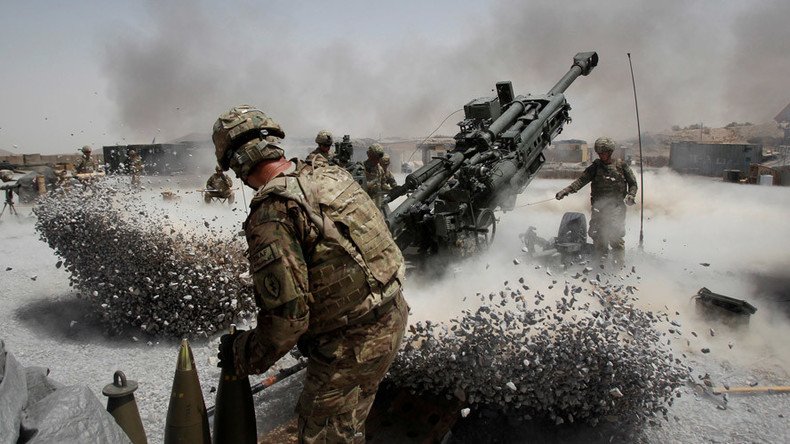Cost of US post-9/11 wars approaching $5trn – report

The US spent $4.79 trillion on wars in the Middle East and on the ‘War on Terror’ after the September 2001 terrorist attacks, a new report estimated.
The report by the Cost of War Project, which is run by Brown University’s Watson Institute, counted the total budgetary cost of the wars America waged in Afghanistan, Iraq, Pakistan and Syria as well as on counter-terrorism.
The $4.79 trillion figure includes future obligations to spend budgetary money through 2053, estimated future spending on veterans, interest already paid for money borrowed for the war effort and other relevant expenditures. This is $300 billion higher than what the project reported in 2015.
The estimate does not include interest the US is expected to pay on war loans, but says the current operational cost may pale in comparison.
“Interest costs for overseas contingency operations spending alone are projected to add more than $1 trillion to the national debt by 2023. By 2053, interest costs will be at least $7.9 trillion unless the US changes the way it pays for the wars,” wrote report author Neta Crawford, professor of political science at Boston University and co-director of the Costs of War Project.
The figure also excludes costs that are difficult to estimate such as the spending on veterans by local and state budgets. Neither does it put a dollar cost on loss of human life or the toll the wars take on the US economy. The former was detailed in an earlier report published in August. The macroeconomic impact is addressed briefly and is said to have “cost tens of thousands of jobs, affected the ability of the US to invest in infrastructure and probably led to increased interest costs on borrowing, not to mention greater overall federal indebtedness.”
The paper details other estimates of the cost of war by US officials and scholars, saying that they were more conservative.
“This paper’s estimate of current and future costs of war greatly exceeds pre-war and early estimates. Indeed, optimistic assumptions and a tendency to underestimate and undercount war costs have, from the beginning, been characteristic of the estimates of the budgetary costs and the fiscal consequences of these wars,” the report said.













